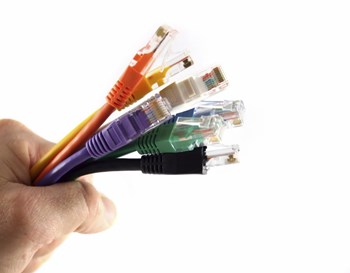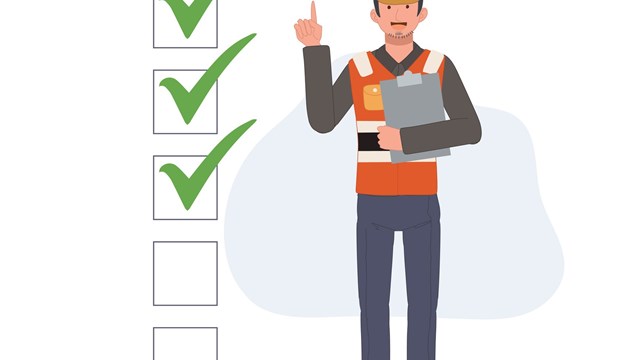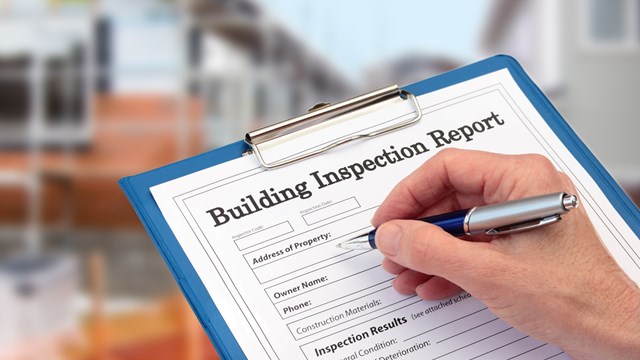
Ask any realtor what their customers are looking for in a condo or HOA and they will quickly point out the importance of the latest and greatest 21st Century technology as one of the top requests. Much like the inherent evolving nature of consumer technology, the tech needs of residents will always be in flux. In order to stay competitive in the strengthening market and keep up with residents’ demands, buildings will need to advance their amenities accordingly.
This is particularly relevant where advanced telecommunications are concerned. Wireless connectivity, cable and DirecTV, and other media are indispensable components of everyday life, and even buildings and condo developments built long before the advent of these amenities must be prepared to adapt their electrical and other capabilities in order to deliver the goods to both new owners and long-time residents.
Today's buyers expect features such as wireless connectivity and 100Mbps Internet speeds. If a building can't deliver these amenities, a building's marketability can surely expect to take a hit.
Older buildings aren’t always prepared for tech and telecom upgrades and retrofits due to improper infrastructure, but the rewards will outweigh the costs in the long run in making drastic changes.
Victor Cypher, president of Cypher Communications, with offices in New York and several other states, is a former condo developer who switched to low-voltage installation in condos a decade ago. He says a lot of companies are going to a fiber infrastructure, but once they get inside the building, the existing structure is antiquated, and they find they can’t do what they want as easily as they hoped.
“The big thing is a majority of these condos were built in the ’70s and ’80s, so it has coax cabling and it can’t really be fixed now,” he says. “To carry the new signals, all the cabling needs to be upgraded and that’s one of the biggest things to overcome. It’s not that daunting of a task, but it is labor intensive.”
These older buildings may have the desire to upgrade and even the money, but it’s not always that simple. Analog signals need to be switched to digital ones and a lot of the wiring in the “olden days” were done on a loop system and can’t be utilized for high-definition today.
“The initial instillation done for the analog systems would require new cable throughout and that involves opening up walls and things that are costly,” Cypher says. “Every association will need to figure out if it’s worth the trouble and cost, but it’s going to be one of those things that will keep residents from moving in.”
Home Networking
Wireless, powerline, phone line and coax are the mediums in the house that are used for transmitting voice, data and video applications. However, as video consumers more bandwidth, wireless and powerline are inconsistent and do not offer the reliability of delivery required for video, especially high definition content.
According to Rob Gelphman, vice president of marketing and member relations for The Multimedia over Coax Alliance, the connected home is really a hybrid as there is “no one size fit all” remedy. All have their pros and cons and choices ultimately depend on usage patterns of the consumer.
“As more devices are brought into the home and as more services are accessed with these devices, wireless could slow as it is a shared medium. It is surprising how many people do not know that,” Gelphman says. “It is really a medium more suited to portable devices as you are not going to connect a wire to a tablet or smart phone.”
Powerline, of which there are electrical outlets in every room, suffers from interference issues, which affects reliable delivery as well. If you turn on a vacuum cleaner and are talking on a DECT phone, while trying to access email on your computer, you could have an interference issue affecting transmission of data (email) and video (Netflix). This is the result of physics and the average consumer is not aware of that either.
Traditional phone lines are not used for video at all and many people have dropped their landlines in favor of cell phones. It is still prevalent and in widespread use, of course, but the medium has disappeared from the conversation the last few years, as it is not considered a viable medium for anything but wired telephones.
“Coaxial outlets are fewer in number but coax was designed for video and outlets can generally be found where you watch TV,” Gelphman says. “It is also immune from interference and is prevalent in most homes in the U.S.”
Experts say any home networking technology standards are capable of high performance. However, reliability can be an issue because of interference issues that accrue from the nature of the medium.
Wired or Wireless
Wireless alternatives to home networking offer benefits of portability. The user can receive content anywhere in the house. However, high definition video is a challenge due to a number of factors including building materials, interference with other signals and the general nature of the technology, which does not provide the stability for consistent distribution of HD video around the home.
Wired alternatives tend to be more stable and generally provide the reliability required for HD, gaming, over-the-top, content sharing and high speed Internet access.
“Essentially there are two metrics for measuring performance. One is called the PHY rate (or physical layer) and the other, the MAC rate (Media Access Controller). The former is the theoretical rate for maximum performance that is possible, though not probable,” Gelphman says. “The MAC rate is the one that is important. It is the actual throughput that is realized. It is the speed you get at home.”
Many home networking technology standards are capable of high performance. However, reliability can be an issue because of interference issues that accrue from the nature of the medium.
Distributed Antenna Systems (DAS) are a solution to buildings wanting to increase the speed and stability of wireless connections.
“AT&T is an industry leader in deploying DAS, which is a network of several small antennas designed to enhance wireless service within a geographic area or building. It has the ability to provide enhanced wireless coverage to customers in both indoor and outdoor spaces where geographical limitations (terrain, building construction, etc.) or crowd density might otherwise prevent an optimal wireless experience,” Paula Doublin, assistant vice president of network operations for AT&T, says.
Good news for condo dwellers in prewar buildings—DAS can be installed in all structures despite age.
“Building systems can be updated/upgraded, streamlined and integrated in older construction. AT&T has installed DAS networks in buildings designed and built in the 1920’s and well as buildings built in 2013,” Doublin says.
Verizon FiOS is another option available to cater to residential Internet, television and telephone needs. This fiber optic technology can carry more information at faster speeds than its older copper coaxial cable counterpart. Before the installation process, members of the FiOS installation team will meet with the board or manager to construct a customized plan for the building. After the project is cleared, a swift installation process begins.
“We’ll bring the fiber into the building itself,” Tom Nugent, the national sales director for Verizon Enhanced Communities, says. “From there, we will either use existing molding or we’ll pipe the fiber through the hallways through the ducts and into the actual units. Once in the unit, nine times out of 10, we use the coax that’s in the unit itself or we’ve got some other unshielded fiber that’s very thin—it’s basically invisible—that we can bring in in order to put what we call the ONT (Optical Network Terminal) in the closet there. From there, we will feed the coax that’s already behind the walls in the jacks that are there so [residents] can have HDTV content and high speed Internet over FIOS.”
From start to finish, the actually build process to deploy FiOS in a 100-unit building can be done in under a month, Nugent says. However, there is one caveat to this relatively quick and painless option: the wait list. Because FiOS is in such high-demand, particularly in New York City co-ops, a building can be wait-listed for about a year.
Bulk Service
Much like bulk cable is the norm in multifamily buildings, bulk Internet is the new standard, experts say. Bulk Internet contracts simplify the process of obtaining network access greatly, as every resident goes through the same provider, versus having residents employ the services of ten different providers. For a condo or HOA, a bulk agreement outlining the proper standards and performance need to be written into the agreement so that it becomes the responsibility of the selected provider.
Experts urge managers to make sure their contracted provider offers them the latest and greatest network options to ensure residents can stay up to speed, no pun intended.
If the year-long wait-list time to get hooked up with FiOS was disconcerting, there’s hope: Verizon also offers buildings FiOS in bulk service, which come with an added bonus of making a considerable jump up the wait list.
“In a bulk model, the co-op board or building owner would elect to provide everyone in the building to use FIOS services, and the board would do an assessment and pay the bill,” Nugent says. “What they get in return is two-fold: One is they get a significant discount off our rates that are currently in the marketplace, and in addition to that, they get a consideration to be moved up in the build process—we usually build those much quicker.”
Rather than being on a year long waiting list, buildings could be hooked up with FiOS in as little as two months if there are no roadblocks delaying the build.
Time Warner Cable also offers their own TV and Internet services over their cable infrastructure, but it’s based on isolated areas of their specific agreements. According to Bobby Amirshahi, vice president of public relations for Time Warner Cable's New York City operations, "We have a dedicated team serving co-op and condo buildings throughout New York and New Jersey. We provide customized packages of TV, Internet and phone for buildings with 100 to 150 residential units, and can offer bulk pricing for as few as 25 to 40 units."
Advancements Abound
If you look back 50 or 100 years, buildings were still using twisted pair and flat MATV wiring and even 25 years ago, Internet wasn’t available, and IP technology wasn’t even developed. One building system that has benefited greatly from the proliferation of high-tech innovations and advances is video security, thanks to the large hard drive space available on today's cameras which allow for clearer images.
Cypher is also an instructor for the Custom Electronic Dsign and Installation Association, the leading global authority in the $14 billion home technology industry. For new buildings and associations being built, he recommends installing both fiber cable and Cat-6 wiring.
“You may not use them now, but it’s important you have them for future use. Things are changing so quickly and so rapidly that 10 years from now, a lot of cabling won’t be in use anymore and it may be cost prohibitive to do fiber throughout,” Cypher says. “Newer buildings should look at running fiber, coax and intranet cable to every location. The infrastructure should be stacked on top of each other so putting equipment in won’t be a hassle later on.”
Final Thoughts
Unfortunately, the last thing anyone thinks of when looking for a new home is the low voltage capabilities, yet the first thing everyone is concerned with is their Internet and TV.
“Architects design buildings and low voltage is always like the ugly stepsister,” Cypher says. “That could be a detriment to those looking to sell units. With all the new equipment coming out, they should spend more time in the plans and know what’s available and how things can be added in the future to keep everyone happy.”
Keith Loria is a freelance writer and a frequent contributor to The Cooperator. Editorial Assistant Enjolie Esteve contributed to this article.






Leave a Comment